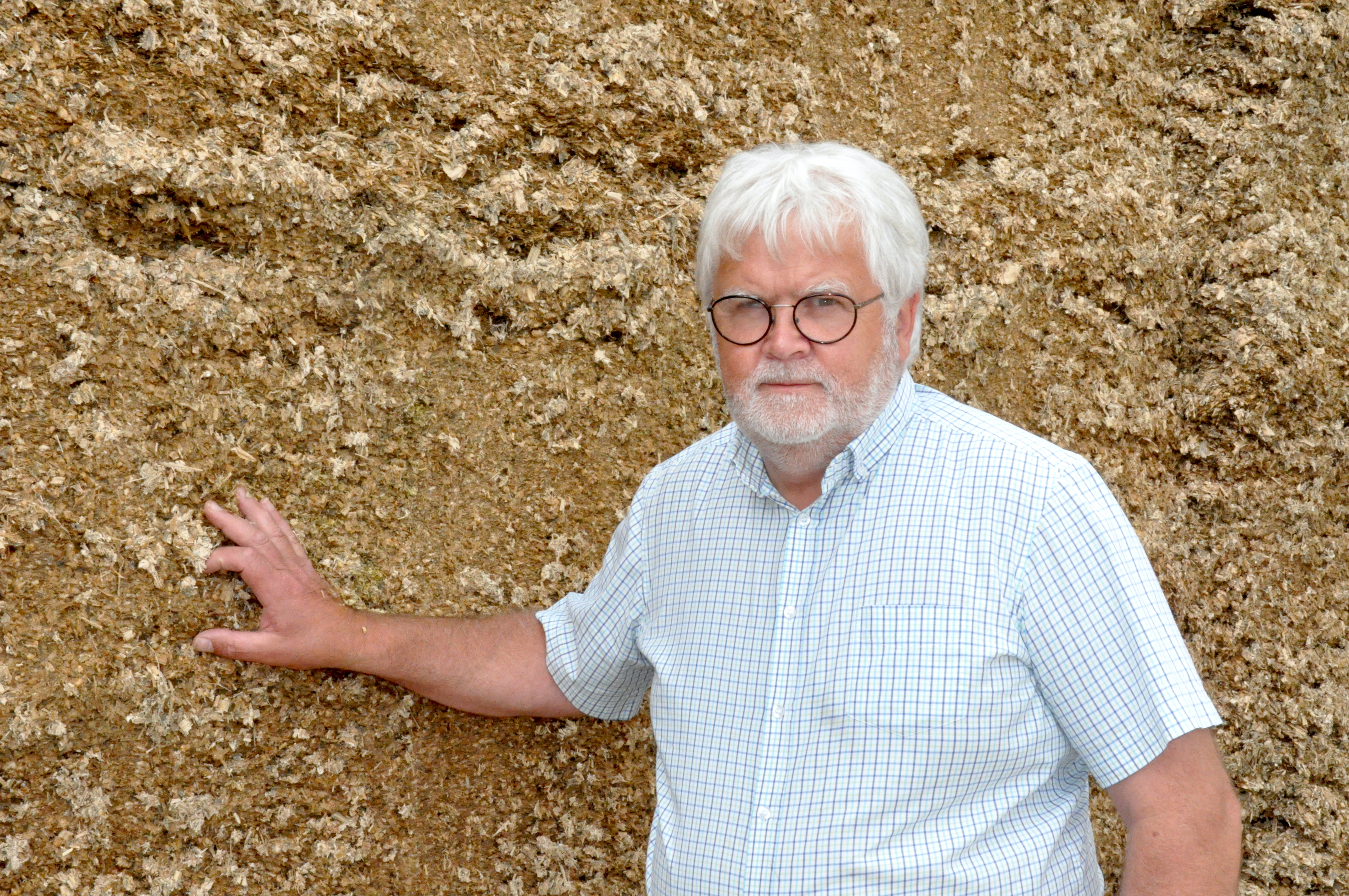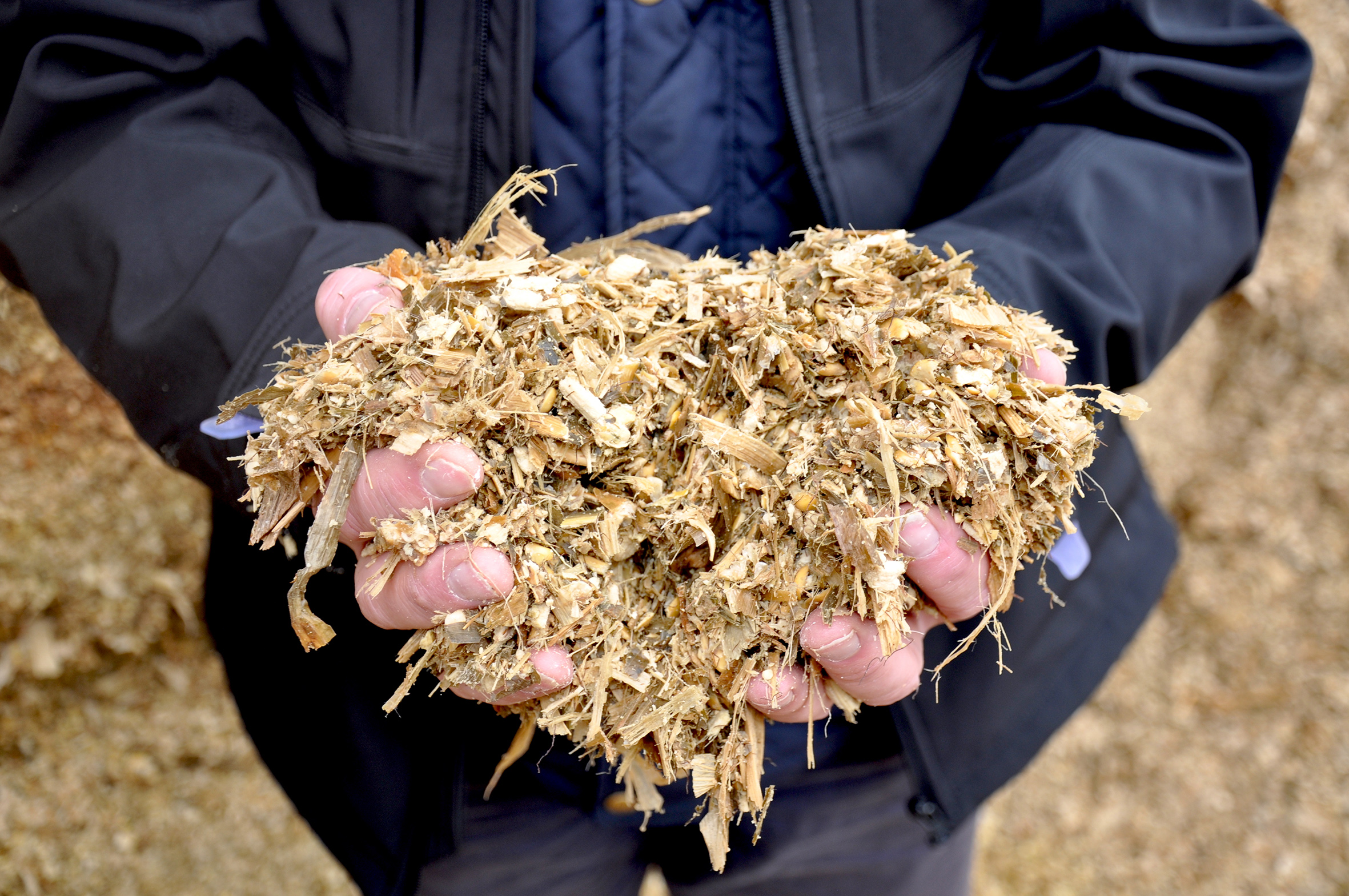Why good maize silage could be key to head off forage shortfalls
14 September 2022
Prospects of low winter silage stocks – due to poor grass growth during the summer drought and early opening of clamps for buffer feeding – could make it important to employ extra vigilance to safeguard maize silage against losses this year, in order to head off forage shortfalls, says Volac silage expert, Peter Smith.
Other reasons are because of the high costs of supplementing low silage stocks with bought-in feeds, he says, and to capitalise on buoyant milk prices, with maize providing a cost-effective and high-energy homegrown forage.
In parts of the country, the drought may have also impacted maize yields, he says, while high fuel and fertiliser costs mean maize has cost more to grow this year, so protecting maize silage dry matter (DM) and nutrients will be important to cover this extra investment.
In a normal year it may be possible to tolerate a few losses in maize silage,” says Mr Smith. “But with grass growth halted in many areas during the summer drought, any significant in-clamp losses in maize could be disastrous for overall winter silage stocks.
“Even average losses in maize clamps equate to about one in every 10 trailer loads of DM ensiled being lost. If attention to detail with harvest or conservation slips this can double. When spoilage occurs around the vulnerable top and shoulders of clamps, losses here can reach 50%.
However, it’s not just the least nutritious parts of the DM that the microbes that cause maize silage losses feed on. It’s the nutritious sugars and starches. So not only is there less DM, but the DM remaining is lower in energy. Certain microbes can also reduce silage palatability and cause mycotoxins,” he adds.
To help conserve maximum maize DM and nutrients, Mr Smith suggests some key dos and don’ts:
Do not leave maize harvest too late
It is easy to miss the ideal 30-33% DM content for harvesting maize, says Mr Smith, often because contractors cannot get to the farm in time. However, harvesting maize too dry makes it less digestible to the animal and more difficult to consolidate, he says, leaving it vulnerable to losses from heating (aerobic spoilage) from yeasts and moulds, due to air in the clamp. “Check your crop % DM regularly so you can get your contractor on-farm at the ideal time, and remember that modern maize varieties are often still green when ready to harvest. Harvesting too early also reduces maize feed value because starch isn’t fully formed in the cobs.”
Do chop maize to the correct length
With maize so vulnerable to heating, chopping it to the correct length to aid squeezing out air from the clamp is crucial, says Mr Smith. Shorter chop lengths aid consolidation, especially if maize is dry, so consider chopping to 1.5-2.0cm, or down to 1.2cm if needed, he suggests.
Do not be tempted to cut crops too low
Although it might be tempting to cut maize crops closer to the ground this year in search of extra bulk, do not do this, says Mr Smith. The stem base is low in digestibility and contains high numbers of undesirable microbes, for example from soil, which interfere with preservation in the clamp.
Do ensile with the correct type of additive
Although maize silage is prone to heating, this is not the only way DM and nutrients are lost. Invisible losses from poor quality fermentations, caused by naturally-occurring inefficient fermentation bacteria on the crop, can account for half the overall DM losses, so it is important to target both problems with a dual-acting additive, Mr Smith points out.
The dual-action additive Ecocool, containing the beneficial bacteria Lactiplantibacillus plantarum MTD/1 and Lactobacillus buchneri PJB/1, not only enhances fermentation, it has also been shown to keep maize silage cool and stable for more than 10 days after removal from the clamp.
Do not skimp on consolidation and sealing
Do not underestimate how much consolidation maize needs, says Mr Smith. Typically, at 30% DM it requires about 25% of its weight arriving at the clamp per hour to consolidate it, so 100 tonnes per hour requires constant rolling by 25 tonnes, for example by a loading shovel plus a good-sized tractor, he adds. “Fill clamps in horizontal layers at no more than a 20 degree angle, and at most 10-15cm deep, for maximum benefit from compaction machinery. Filling in a wedge shape makes consolidation more difficult,” he notes.
To minimise air ingress, clamp walls should be lined with polythene side sheets, and an oxygen barrier film which is sucked into the surface contours placed on top of the maize to create a good seal. Pull side sheets over this with a minimum 1-2 metre overlap all around, followed by a polythene top sheet, then a protective woven sheet well-weighted with silage mats, touching tyres or bales. Finally protect from damage by rodents and birds.
 Reasons why conserving good maize silage could be particularly important this year
Reasons why conserving good maize silage could be particularly important this year
- To offset potentially low grass silage stocks – caused by the impact of the summer drought on grass growth and early opening of clamps for buffer feeding
- To reduce the impact of potentially low forage maize yields in some areas due to the drought (e.g. southern England)
- Because of the high costs of supplementing low silage stocks or poor quality silage with bought-in feeds
- To cover increased maize growing costs this year due to fuel and fertiliser prices rises
- To make the most of buoyant milk prices – with maize providing a high energy forage
Looking to make consistently better maize silage? Check out our latest article Maize silage offers good opportunity with high prices to find out what you can do to make better maize silage.